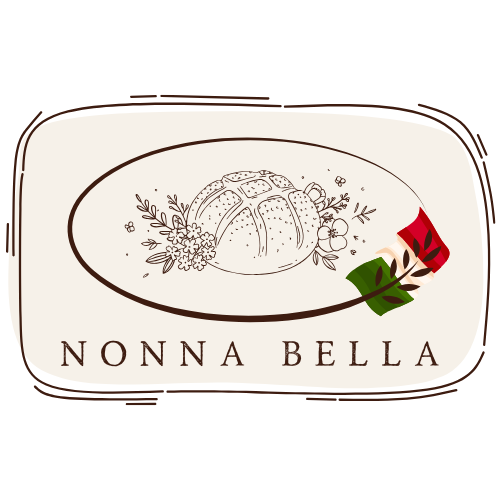
My Sourdough Life: Passionate Adventures in Homemade Bread Making
Welcome to my sourdough life, a journey filled with the rustic charm of homemade sourdough and the intoxicating aroma of freshly baked bread. Here, I'll share my adventures in artisan bread baking, the tips I've gathered, joyous triumphs, the challenges overcome, and the essential tools that make this craft even more fulfilling.
Let's dive into the world of sourdough baking, where wild yeast fermentation brings magic to our kitchens. Whether you're a beginner eager to learn how to bake sourdough bread or an experienced baker seeking sourdough baking tips, this post is for you!
Embracing the Wild: Understanding Sourdough Starter
At the heart of every sourdough loaf lies its starter, a living culture of wild yeast and bacteria. The journey begins with knowing how to feed your sourdough starter. A typical sourdough starter feeding schedule involves daily or weekly feeding with water and flour. This ensures the yeast and bacteria have the nutrients they need to stay active and vibrant.
But what happens if things go awry? Sourdough starter troubleshooting is key to a successful baking adventure. Sometimes, the starter might seem inactive or develop an unusual smell. Fear not, with patience and a bit of guidance, you can revive your starter.
Interested in starting your journey with a heritage culture? The Nonna Bella Dehydrated Sourdough Starter brings Tuscan history to your kitchen, a perfect starting point for novice and seasoned bakers alike.
Sourdough Starter vs. Yeast: What’s the Difference?
Why choose a sourdough starter over commercial yeast? It's a common question for newcomers. Sourdough's slow fermentation process enables a complex flavor profile and better digestibility. This includes tangible benefits for sourdough for diabetics, as the fermentation process can lead to a lower glycemic index.
Sourdough Fermentation: The Heart of Flavor
Sourdough fermentation is where the true magic lies. As the dough slowly rises, wild yeast and lactic acid bacteria work together to create depth and complexity of flavor. This is what distinguishes sourdough from standard factory-produced bread.
For the fermentation process, maintaining a consistent sourdough feeding and maintenance routine is essential. Remember, a happy starter is a flourishing one!
Homemade Sourdough Bread Recipe: A Classic Guide
Now let's talk about how you can bring all this knowledge into practice with an easy sourdough bread recipe. Here’s a basic guide to making your first loaf:
Mixing the Dough
Combine your active sourdough starter with water, flour, and salt. Mix until you have a rough, sticky dough.
Autolyse
Let the dough rest for about 30 minutes. This step ensures the flour fully absorbs the water, making the dough easier to handle.
Stretch and Fold
Over the next couple of hours, perform several sets of stretch and folds. This builds the dough’s strength and structure.
Bulk Fermentation
Allow the dough to rise at room temperature until it has increased by about 50 percent.
Shaping
Learn how to shape sourdough bread properly. This can vary based on the style you’re aiming for – boule, batard, or baguette.
Final Proof
Let your shaped loaf proof in the fridge overnight for a more pronounced sour flavor.
Scoring and Baking
Before baking, score your bread. For the best sourdough scoring techniques, consider using a lame or a sharp knife. The Nonna Bella 4.5Qt Enameled Cast Iron Dutch Oven offers a perfect baking environment to achieve that crispy crust.
Troubleshooting Your Sourdough Bread
Bread baking is as much an art as it is science. Even the most experienced bakers face challenges, like under or overproofed dough, flat loaves, or uneven crumb structures. For effective sourdough bread troubleshooting, pay close attention to the variables: temperature, activity of your starter, and even humidity.
The Tools of the Trade
In the pursuit of the perfect sourdough, the right tools can elevate your baking game. Consider the Nonna Bella 6Qt Enameled Cast Iron Bread Pot with Lid for an ideal environment that retains moisture and distributes heat evenly.
For pizza enthusiasts, the 12Inch Ceramic Pizza Stone ensures a crisp, artisan-style pizza base. Pair it with Nonna’s Pizza Dough Docker for perfect results.
How to Store Your Sourdough Starter
When you need a break from baking, knowing how to store sourdough starter becomes vital. You can refrigerate it to slow down fermentation. For longer storage, dehydrating is an option, just like the heritage cultures from Nonna Bella.
A Lifetime of Baking and Learning
My sourdough life is a journey of discovery, experimentation, and, most importantly, passion. Through practice and persistence, anyone can master the art of sourdough baking. So roll up your sleeves and immerse yourself in the age-old tradition that is as rewarding as it is delicious.
For more on artisan bread baking and other sourdough essentials, visit Italian Sourdough.
Happy baking, and may your sourdough adventures be ever thrilling and delicious!
